Themed collection Photofunction Proteins

Photofunctional proteins: how nature keeps the laboratories updated about light and life
Welcome to this Photochemical & Photobiological Sciences themed issue entitled “Photofunctional proteins”.
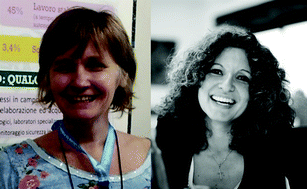
Photochem. Photobiol. Sci., 2015,14, 198-199
https://doi.org/10.1039/C5PP90004B
Tracking the primary photoconversion events in rhodopsins by ultrafast optical spectroscopy
We review the most recent experimental and computational efforts aimed at exposing the very early phases of the ultrafast isomerization in visual Rhodopsins and we discuss future advanced experiments and calculations.
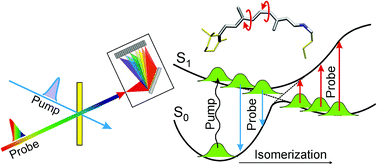
Photochem. Photobiol. Sci., 2015,14, 213-228
https://doi.org/10.1039/C4PP00370E
Exploring color tuning strategies in red fluorescent proteins
Red-emitting fluorescent proteins (RFPs) with fluorescence emission above 600 nm are advantageous for cell and tissue imaging applications.

Photochem. Photobiol. Sci., 2015,14, 200-212
https://doi.org/10.1039/C4PP00212A
A caged substrate peptide for matrix metalloproteinases
A caged substrate peptide for human MT1-MMP was synthesized and characterized. Photoactivation releases the peptide in a two-step mechanism for enzymatic hydrolysis.

Photochem. Photobiol. Sci., 2015,14, 300-307
https://doi.org/10.1039/C4PP00297K
Upgrading a microplate reader for photobiology and all-optical experiments
Using open-source electronics and optical components, we add programmable illumination capabilities to a multimode microplate reader, thus enabling photobiological and all-optical experiments at high throughput, reproducibility and fidelity.
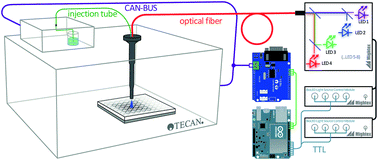
Photochem. Photobiol. Sci., 2015,14, 270-279
https://doi.org/10.1039/C4PP00361F
Singlet oxygen photosensitisation by the fluorescent protein Pp2FbFP L30M, a novel derivative of Pseudomonas putida flavin-binding Pp2FbFP
The flavin-binding protein Pp2FbFP L30M shows a high singlet oxygen quantum yield.
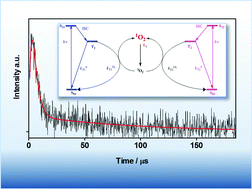
Photochem. Photobiol. Sci., 2015,14, 280-287
https://doi.org/10.1039/C4PP00338A
NpR3784 is the prototype for a distinctive group of red/green cyanobacteriochromes using alternative Phe residues for photoproduct tuning
We report chromophore–protein interactions used by cyanobacteriochrome NpR3784 and related proteins for spectral tuning of the green-absorbing photoproduct state. These interactions are distinct from those used by canonical red/green cyanobacteriochromes.
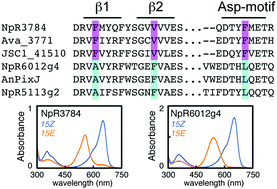
Photochem. Photobiol. Sci., 2015,14, 258-269
https://doi.org/10.1039/C4PP00336E
A search for radical intermediates in the photocycle of LOV domains
LOV domains are the photoactive part of many biological sensors for blue light. The primary photochemical reaction leads to formation of a covalent adduct between the cofactor flavin and a cysteine residue of the protein. The reaction starts from the flavin triplet state. Does this reaction proceed in a single step, or are other intermediates involved?

Photochem. Photobiol. Sci., 2015,14, 288-299
https://doi.org/10.1039/C4PP00155A
Photochromic conversion in a red/green cyanobacteriochrome from Synechocystis PCC6803: quantum yields in solution and photoswitching dynamics in living E. coli cells
Photochromic conversion in GAF3 has been followed in solution and in E. coli cells.

Photochem. Photobiol. Sci., 2015,14, 229-237
https://doi.org/10.1039/C4PP00337C
Photoinduced transformation of UVR8 monitored by vibrational and fluorescence spectroscopy
The plant photoreceptor UVR8 uses tryptophan side chains to absorb UV-B radiation to induce photoprotective responses via a so far unknown molecular signaling mechanism. We investigated structural transformations and quantum efficiency of UVR8 photoactivation by vibrational and fluorescence spectroscopy.
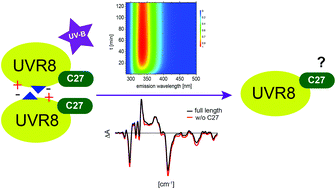
Photochem. Photobiol. Sci., 2015,14, 252-257
https://doi.org/10.1039/C4PP00246F
Dehydration affects the electronic structure of the primary electron donor in bacterial photosynthetic reaction centers: evidence from visible-NIR and light-induced difference FTIR spectroscopy
Dehydration of bacterial photosynthetic reaction centers alters the electronic structure of the primary electron donor. Implications for photocatalytic activity are discussed.

Photochem. Photobiol. Sci., 2015,14, 238-251
https://doi.org/10.1039/C4PP00245H
About this collection
This is a themed collection dedicated to photofunctional proteins, guest edited by Aba Losi and Stefania Abbruzzetti.